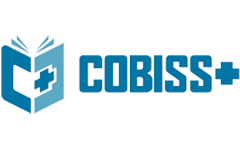Impacts of Non-Financial Compensation on representative accomplishment at business college in the working environment
DOI:
https://doi.org/10.61841/b2arvq36Keywords:
execution of representatives, disposition of workers, non-monetary motivating forces, work environment execution, outward rewards, characteristic prizes. Vocation development plan, equilibrium of work life, appreciationAbstract
The point of the investigation is to discover the impact on worker perspectives of non-monetary motivations and to get data on the elements affecting their work environment execution in Pune's business organizations. An examination was led from the different staff assignments, and 4 Pune universities were chosen to see if and if the non-financial benefits are given to representatives, so it influences the disposition of workers in the work environment and improves the proficiency of representatives. A study of 300 representatives was taken, of which 217 haphazardly chosen workers from 4 colleges answered. Information was gathered through surveys containing 15 inquiries on the Likert scale. SPSS 21.0.0 breaks down the information gathered from the examination. Connection is utilized to assess the information, and the discoveries show that worker criticism, freedom, profession advancement plan, representative valuation, learning activities, open and loosened up work air, and great administrative connections all positively affect worker disposition and work environment execution. It will likewise be proposed that zeroing in on variables that positively affect the attitude and execution of representatives will improve worker execution and make a beneficial work environment that will likewise support the institute and its efficiency. Their achievement in the homeroom will likewise be improved, and the disposition of workers and learning by understudies will likewise move upwards.
Downloads
References
1. Anderson, J. (n.d.). at Awards Plus. Retrieved May Monday, 2013, from awesomeawards:http://www.awesomeawards.com/index.php/top-5
2. Dambisya. (2007, May). Retrieved from equinetafrica:http://www.equinetafrica.org/bibl/docs/DIS44HRd ambisya.pdf
3. Dzuaranin, S. (2012). The effect of tangible and intangible noncash rewards on performance and satisfaction in production settings. Management Accounting Quarterly, vol. 13, no. 4.
4. Erbasi, A. (2012). The Effect of Financial and Non-financial Incentives on Job Satisfaction: An Examination of Food Chain Premises in Turkey. International Business Research, Vol. 5, No. 10.
5. Grant, P. C. (n.d.). Retrieved May Saturday, 2013, from pmm: http://www.pmm.co.uk/motivation/images/assets/pdf/Motivatio n%20-%20Cash%20Vs%20Non%20Cash.pdf
6. Group, M. (2011, September). Retrieved 2013, from shrm: http://www.shrm.org/hrdisciplines/compensation/ articles/pages/noncashmotivator.aspx
7. Jeffrey. (n.d.). The Benefits of Tangible Non-Monetary Incentives.
8. Nsour, A. (2012). Relationship between incentives and organizational performance for employees in Jordanian universities. International Journal for Business and Management, Vol. 7, No. 1.
9. Ray, L. (n.d.). Retrieved June 2013, from globalpost: http://everydaylife.globalpost.com/effectemployeeattitude-productivity workplace3168. html
10. Roberts. (2005). relationship between rewards, recognition, and motivation at an insurance company in the western Cape.
11. Sammer, J. (2011). Retrieved 2013, from shrm: http://www.shrm.org/hrdisciplines/benefits/articles/pages/nonfinancialrewards.aspx
12. Simmons. (2009, April). Bret L.Simmons. Retrieved June 2013, from http://www.bretlsimmons.com/2009-04/do-you-know-what-drives-work-performancepart-2/ Simmons. (2010, November). Retrieved June 2013, from Bret L. Simmons: http://www.bretlsimmons.com/2010-11/exposing-some-truths-about-motivatingmillennials-in-the-workplace/
13. Simmons. (2011, August). Bret L. Simmons. Retrieved June 2013, from Bret L. Simmons: http://www.bretlsimmons.com/2011-08/highperformance-work-systems-affect-employeetitudes-andgroup-performance/. Stovall. (2003). increasing employee participation in fire safety education programs using non-monetary rewards.
14. Tausif. (2012). Asian Journal of Management Research.
15. Zhou, J. (1998, April). APA PsychNet. Journal of Applied Psychology, 261-276.
Downloads
Published
Issue
Section
License
Copyright (c) 2020 AUTHOR

This work is licensed under a Creative Commons Attribution 4.0 International License.
You are free to:
- Share — copy and redistribute the material in any medium or format for any purpose, even commercially.
- Adapt — remix, transform, and build upon the material for any purpose, even commercially.
- The licensor cannot revoke these freedoms as long as you follow the license terms.
Under the following terms:
- Attribution — You must give appropriate credit , provide a link to the license, and indicate if changes were made . You may do so in any reasonable manner, but not in any way that suggests the licensor endorses you or your use.
- No additional restrictions — You may not apply legal terms or technological measures that legally restrict others from doing anything the license permits.
Notices:
You do not have to comply with the license for elements of the material in the public domain or where your use is permitted by an applicable exception or limitation .
No warranties are given. The license may not give you all of the permissions necessary for your intended use. For example, other rights such as publicity, privacy, or moral rights may limit how you use the material.
















